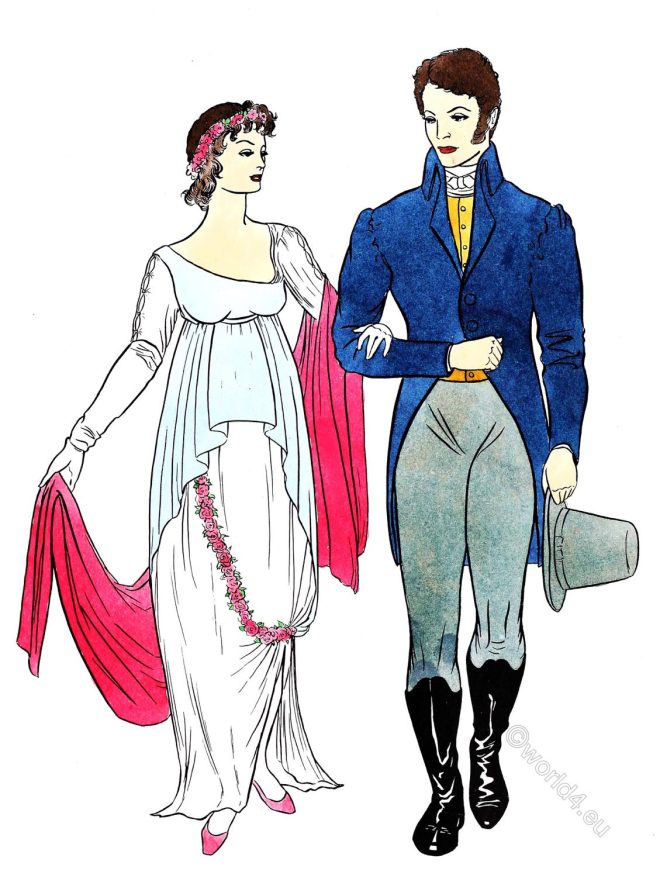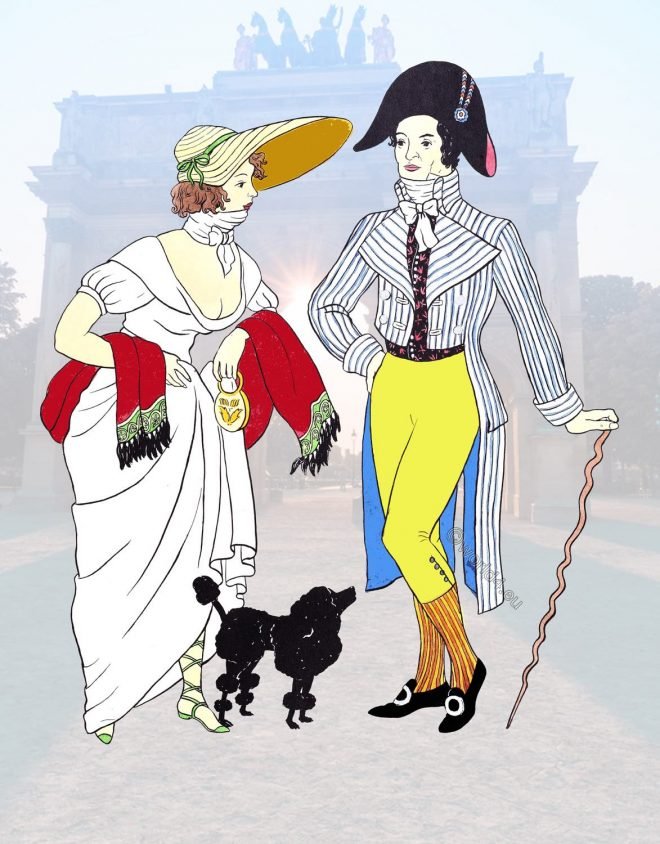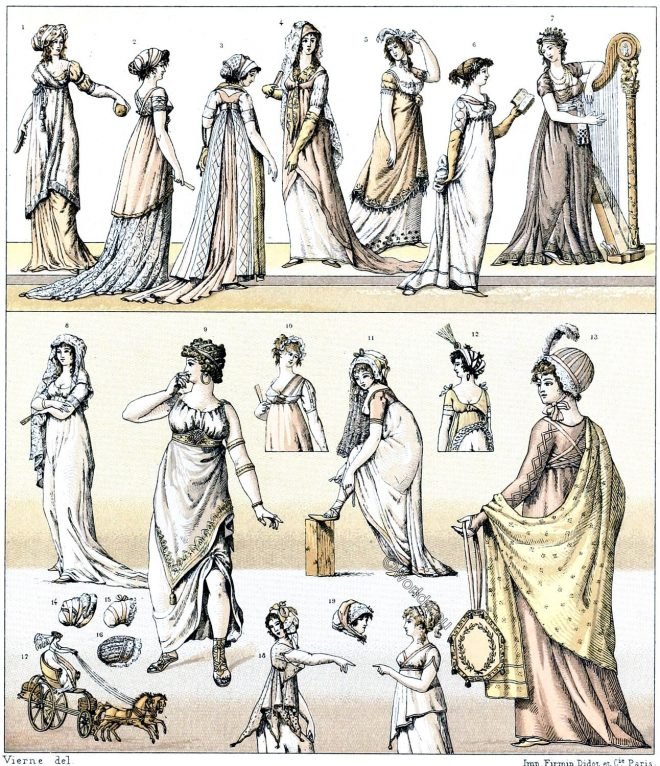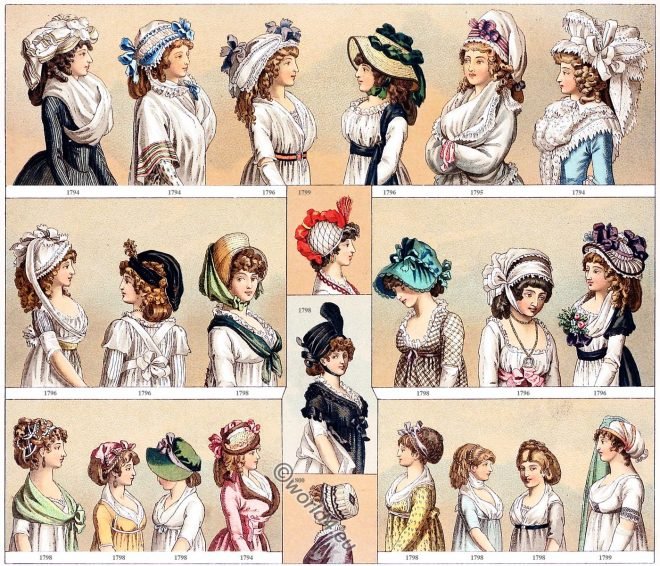Directoire exécutif in his ordinary costume. He accompanies the Directoire to all public and private meetings.
Category: Directory
The Directory or Directorate (French: Le Directoire; 26 October 1795 – 24 December 1799) was the last form of government of the French Revolution.
The eighteenth century silhouettes. Baroque, Rococo & Directorate.
The leading fashion designers of the eighteenth century looked to the sixteenth century and later to classical Greece and Rome for ideas and inspiration.
French directoire. Neoclassical fashion in the transition to the Empire.
French directoire. Neoclassical fashion in the transition to the Empire. 1789-1800.
Costumes and shawls. French directorate, consulate and first Empire.
Costumes and scarves in the 18th and 19th century. The fashion of classicism during the French directorate, consulate and first empire.
Directoire. Characteristic costume of the French revolutionaries.
The striped stockings and crooked stick are characteristic of the Incroyables. The trend toward simplicity resulted in a classic silhouette for women (Merveilleuses).
Fashion types of the Directory. Stock exchange speculators and crooks.
France 18th century. Fashion types from the time of the Directory. Stock exchange speculators and crooks. The Merveilleuses and the Incroyables.
The Graecomania. Modes of the Directory and the Consulate.
Women’s fashion of classicism in France at the end of the 18th century. Modes of the Directory and the Consulate (1795-1804).
The fashion masters. Paris in transition from Directoire to Empire.
France. The fashion of the dandies from 1801 to 1805. Paris in transition from Directoire to Empire.
Female costumes and fashion from 1794 to 1800. France 18th century.
The comfortable costume, in which the belt was attached at a normal height, was soon followed by the close-fitting dress, the robe collante
Royal and Republican Navy uniforms. France 18th century.
The uniforms of the French Navy under the government of Louis XVI and the revolution. 18th century.










